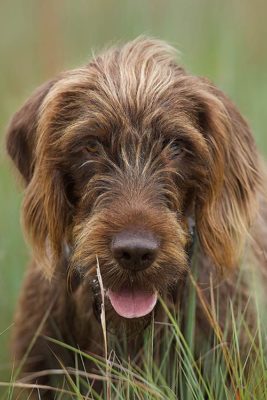Pudelpointer
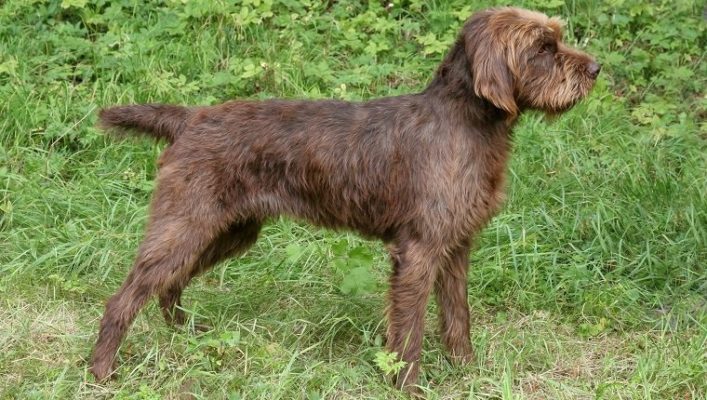
The behavior of the Pudelpointer is balanced and calm, which is quite appropriate for hunting dogs. It is a very attentive and responsive dog. Experienced owners often note the determination and tirelessness of the breed. It will certainly help on a long hunt for small and large wildfowl.
Table of Contents
Breed Information
| Another Name | – |
| Origin | Germany |
| Height | Males 60-68 cm Females 55-63 cm |
| Weight | 25-32 kg |
| Fur | Medium |
| Color | Brown in different shades |
| Lifespan | 11-14 years |
| FCI Classification | Pointing Dogs |
| Group | Hunting dogs |
| Price | From $1500 |
Breed Photos
Origin History
We owe the origin of the Pudelpointer breed to the enthusiastic German Baron von Seidlitz. It was he who worked on its creation for 30 years. At the end of the 19th century in Germany, Seidlitz had the idea of creating a hunting dog that could easily work on water. It was one of the most important criteria for breeding. For many years the cross-breeding program did not bring decent results. French and German poodles and about 100 different pointers were used for the new breed. Accordingly, hence the new double name. It took a long time for the Pudelpointer to settle down as a separate breed finally.
The breed is not popular in its homeland and beyond, despite its working and hunting qualities. In North America, the Pudelpointer did not appear until 1956. And the first society of Pudelpointer owners was founded in 1987. At that time, the chairman of the society, Bodo Winterhelt, took several dogs of the breed to Canada for their further distribution. The breed received its standard and official recognition by the Fédération Cynologique Internationale in 2004.
Appearance
A heavy gait and a slightly shaggy appearance is a very accurate description of the Pudelpointer. Although considered a medium breed, the Pudelpointer is a huge dog with a muscular build. The ratio of body length to height is 10:9. The head is wide and long enough, with a pronounced transition from forehead to muzzle. The muzzle is proportional. Large dark (brown-amber color) eyes with an attentive gaze. The eyelids are covered with thick fur. The ears are medium in size and set high, floppy with rounded tips. The neck is strong and slightly convex.
Deep chest, ribs well expressed. The abdomen is taut. The tail is straight, saber-shaped, covered with fur, but without the characteristic “limp”. The wool of medium length (4-6 cm) is dense and rough, with a dense undercoat. On the head, it looks like mussed bangs, which give a shaggy look and looks like a beard. Allowable colors: All variations of brown, also sparse white markings are possible.
Character
The behavior of the Pudelpointer is balanced and calm, which is quite appropriate for hunting dogs. It is a very attentive and responsive dog. Experienced owners often note the determination and tirelessness of the breed. It will certainly help on a long hunt for small and large wildfowl. From pointers, the breed has taken extraordinary agility and endurance, and from poodles – attachment to the owner and swimming ability.
The Pudelpointer is not suitable for city and apartment life because it needs freedom and a lot of space. They also need regular exercise and long active walks. For all members of the family will be the most faithful friend. Pudelpointers relate to children admirably, and will be ready to play with them endlessly in different games. There is no unnecessary aggression, as well as no developed guarding instinct. To strangers, Pudelpointer is indifferent.
Care
The Pudelpointer spends almost all of its time outside, so you should pay more attention to your pet’s coat. Because of its heterogeneity, tangles can form if not cared for properly. It is recommended to comb out the hair with a special brush every week.
You should bathe your pet only when it is dirty. Frequent baths are not necessary so as not to dry out the skin. Ears and eyes are taken care of as usual, and they should be examined and cleaned every week. Active dog lifestyles will usually shave their nails but trim them every month if that’s not enough.
Training
The main feature of the Pudelpointer is a soft compliant character. He does not like to show his dominant position at all. The dog fully adapts to the owner and has a good penchant for training. He is energetic, cheerful, and obedient. You will enjoy learning commands with your pet. He’ll master them very quickly and rush to please you. Don’t forget that the pet needs early socialization to accept other animals adequately.
Common Diseases
The health and immunity of the Pudelpointer are robust. Studies have not confirmed a propensity for severe genetic diseases. Some veterinarians and owners note only frequent ear infections. As well as a tendency for hip dysplasia.
Nutrition
As with any hunting dog, the diet of the Pudelpointer must be balanced and consist of a lot of protein. The dog is active and expends a lot of energy, which means it needs to be completely replenished. When the weather changes and during the molting period, be sure to add the necessary vitamins to your pet’s diet.
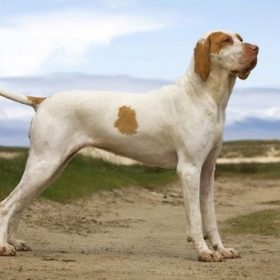 Ariège Pointer
Ariège Pointer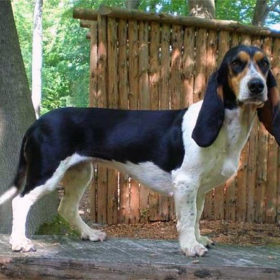 Small Bernese Hound
Small Bernese Hound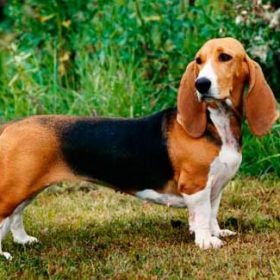 Basset Artésien Normand
Basset Artésien Normand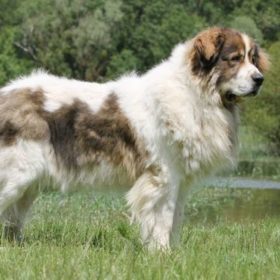 Pyrenean Mastiff
Pyrenean Mastiff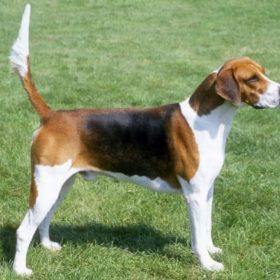 English Foxhound
English Foxhound Tatra Shepherd Dog
Tatra Shepherd Dog